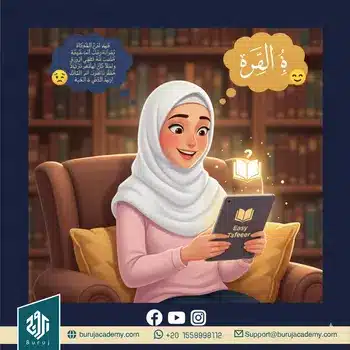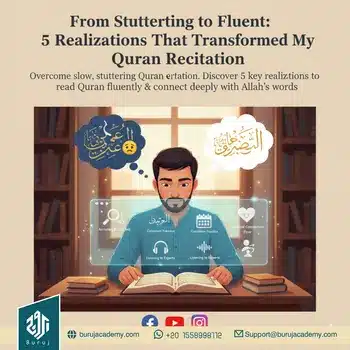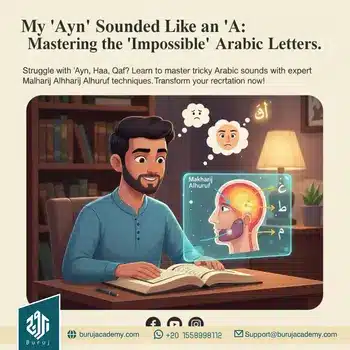Tafseer Seemed Too ‘Scholarly’ For Me. Here’s the Simple Way I Started East Tafseer in English
For years, I lived in a state of reverent distance from the Quran. I loved listening to its recitation; it would bring tears to my eyes. I would read the English translation, and the power of the words would shake me. But there was a line I was afraid to cross. That line was “Tafseer” – the deep, scholarly explanation of the Quran. To me, Tafseer was an imposing, locked room reserved for scholars in towering libraries, for people who spoke fluent classical Arabic, for men with long white beards. It wasn’t for me, a regular person just trying to be a better Muslim. The thought was paralyzing: “What if I misunderstand? What if I’m not ‘qualified’? How can I find an Easy Tafseer in English” The intimidation was real.
The Great Wall of Intimidation – Easy Tafseer In English
My fear wasn’t baseless. My early attempts to breach this wall were disastrous. I would attend an online lecture, and within minutes, the speaker would dive into discussions of asbab al-nuzul (reasons for revelation), nasikh wa mansukh (abrogation), and deep linguistic i’rab (grammar). I felt like I was drowning in terminology I didn’t understand.
Once, I ambitiously decided to “read” a famous multi-volume Tafseer. I found an English translation online, opened it to Surah Al-Baqarah, and was met with a 20-page explanation for the first verse. The author discussed 10 different scholarly opinions on the meaning of “Alif, Lam, Meem,” quoting obscure poets and pre-Islamic texts.
Easy Tafseer In English
I shut the book. My internal voice was loud and clear: “See? This is not for you. This is for scholars.”
This experience reinforced my belief that understanding the Quran’s deeper meaning was a privilege I hadn’t earned. I felt guilty. Here was this divine miracle, a letter from my Lord, and I was too intimidated to even try to understand its context. I desperately wanted to connect, but I felt locked out. My search for an easy tafseer in english seemed like a fantasy. It felt like a contradiction, like asking for “easy brain surgery.” I believed that any “easy” version must be watered down, incomplete, or even inaccurate.
Free Trial Session Contact Us
The “Aha!” Moment That Changed Everything
This frustration simmered for a long time until I shared my feelings with a close friend, someone I admired for their balanced and joyful approach to Islam. I explained my failed attempts, my intimidation, and my guilt.
She smiled gently and said something that completely reframed my perspective: “You’re trying to climb Mount Everest in flip-flops. You’re starting with the PhD-level material and then feeling bad that you’re confused. Tafseer isn’t one single thing. It’s a spectrum.”
She explained that those dense, multi-volume works are for scholars. Their purpose is to preserve every single piece of knowledge, every scholarly debate, every linguistic nuance for posterity.
“But,” she continued, “the primary purpose of the Quran is hidaya (guidance). And Allah made that guidance accessible to everyone. You don’t need to be a scholar to be guided. You just need the right key.”
That was my “aha!” moment. I wasn’t looking for a PhD. JustI was looking for hidaya. I wasn’t trying to write a thesis; I was trying to build a relationship with the Quran.
My entire search query changed. I stopped looking for “the most authentic tafseer” and started searching for “the most accessible tafseer,” for a “simple quran explanation,” for a truly easy tafseer in english.
My “Simple Way”: The Tools That Unlocked the Door
My new search was fruitful. I discovered that there is a wealth of knowledge specifically designed for people like me. Here is the simple, 3-step approach that finally worked and allowed me to start my journey.
1. I Started with the Right Resource: Tafsir As-Sa’di
This was the single most important discovery. I learned about Tafsir As-Sa’di (entitled Taysir al-Karim al-Rahman). This work was a revelation. It was written in the 20th century by Shaykh Abd al-Rahman al-Sa’di with the explicit intention of being accessible.
When I opened its English translation, I almost cried. It was clear, concise, and beautiful.
- It focuses on guidance: Instead of detailing 10 scholarly disagreements, it gives the most prominent and clear meaning.
- It’s uplifting: The author’s tone is one of encouragement. He extracts the lessons, the principles, and the guidance from the verses.
- It’s concise: The explanation for each verse is often just a short paragraph.
Reading Tafsir As-Sa'di was the first time I felt the “scholar” barrier melt away. This was an easy tafseer in english that didn’t feel “dumbed down.” It felt focused. It gave me exactly what I needed: the core message.
2. I Changed My Starting Point: Juz Amma
My second mistake was trying to start with Surah Al-Baqarah, the longest and most legislatively dense chapter in the Quran. It’s an ocean, and I was trying to swim it with no training.
My friend advised me to start at the end: with Juz Amma (the 30th part of the Quran). This was brilliant.
- The Surahs are short: I could read the tafseer for an entire Surah in one 10-minute sitting.
- The themes are powerful: These short, Meccan surahs are potent. They focus on the Oneness of Allah, the Day of Judgment, and the core of our faith.
- It builds momentum: Finishing the tafseer for Surah An-Nas, then Al-Falaq, then Al-Ikhlas… it gave me a sense of accomplishment. Each small victory built my confidence, and I was excited to learn the next one.
Finding an easy tafseer in english for Juz Amma is the perfect gateway. It proves to you that you can do this.
3. I Used a “Topic-First” Approach
Instead of just reading from start to finish, I started looking for answers to my own questions. This is sometimes called a “topical tafseer.”
I was feeling anxious one day, so I searched, “Tafseer on anxiety and patience.” As I was led to verses in Surah Al-Baqarah (“Verily, in the remembrance of Allah do hearts find rest”) and Surah Ash-Sharh (“Verily, with hardship comes ease”).
I would then read the Tafsir As-Sa'di for just those few verses. This made the Quran a living, breathing companion. It wasn’t just an academic text I had to “get through.” It was a source of immediate peace and guidance for my real-life problems. This approach made the knowledge stick, because it was directly relevant to my life.
From “Intimidated” to “Inspired”
It’s been a few years since I started this “simple way.” My journey is far from over, but the intimidation is gone. It has been replaced by a deep, exciting, and humble love for learning.
I now understand that Tafseer is a vast ocean, and it’s okay to be a gentle paddler near the shore. The shore is beautiful, and the water is just as healing. I no longer feel like I’m on the outside looking in. I realize that the Quran invites everyone in. The “scholarly” works are lighthouses for deep-sea navigators, but an easy tafseer in english like Tafsir As-Sa'di is the gentle, guiding light for everyday people like us, helping us navigate our way back to Allah.
If you are standing where I was, feeling that wall of intimidation, please know this: The Quran is for you. Its guidance is for you. You don’t need a PhD. You just need a willing heart and the right first book.
Don’t let the shadow of “scholarly” works block the light of the Quran itself. Start simple. Start small. And you will be amazed at how quickly those locked doors open for you.
Join our growing community of learners and stay connected for valuable insights and updates.
Follow us on Facebook, subscribe to our educational videos on YouTube, and get daily inspiration on Instagram.




